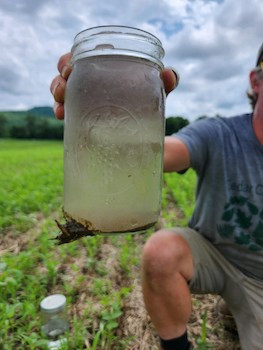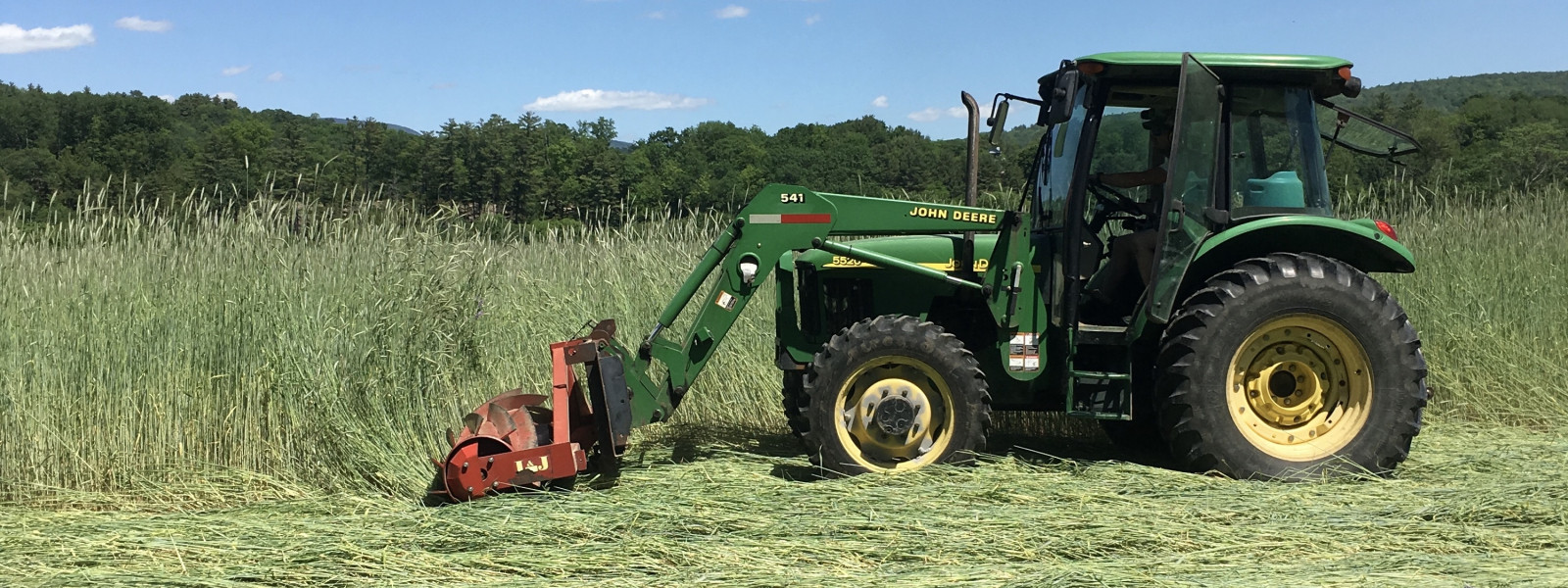The Link Between Soil Structure and Water Quality
World Soil Day is celebrated annually on December 5th. The theme for this year, 2023, is “Soil and water, a source of life.” In this blog post, our Director of Agriculture Stacey Cooper highlights the correlation between soil and water quality and shares findings from our recent tests comparing soil health in traditional organic and no-till organic systems.
In organic farming and gardening, we talk about how healthy soil is full of life. It also has good structure, aggregation, and porosity. Acting as both a sponge and a filter, healthy soil absorbs and stores water while also allowing the water to flow through it. It prevents water from running over the surface, washing soil and debris into the surface water. It filters the water before it enters an aquifer or surface water source.
We currently manage our land using two different systems: traditional organic, which includes mechanical tillage (soil disturbance), no-till organic. Recently, we tested the soil structure and stability of aggregates in a split field, of which about one quarter is managed with no-till practices.
Two simple tests, described below, showed evidence that, in the areas where we use no-till practices, the texture and aggregation of our soils improved. As we mentioned above, these qualities have the potential to prevent runoff (of nutrients, soil amendments, etc.) and allow for water infiltration during heavy rain events.
What we found was an indication that no-till practices can positively affect soil health. The results from these tests inspire us to continue trialing no-till practices—in the face of the challenges that it creates in a diversified organic management system of our scale—and to find ways to reduce tillage as well as soil disturbance as much as possible on our farm.
Slake Test
A slake test will tell you how the soil loses structure when it’s wet. The more easily it loses its structure, the more likely it is to compact during rain events. The rainwater fails to infiltrate and runs over the surface, carrying soil and debris along with it as it runs into local water sources.
How it works:
- Put about one handful of soil in a mesh screen and soak it in water for ten minutes.
- Observe the water quality. Is it mostly clear, or cloudy and muddy?
- Observe the soil. Is it still a clod? Did it turn into mud?
Traditional Organic vs. No-Till Organic: We found that the soil in our traditional organic field had decent aggregation, but fell apart to a certain extent. The clod partially disintegrated, and the water was a little cloudy. On the other hand, the soil clod from the no-till organic section was still solid after ten minutes, and the water was mostly clear.

Water Stable Aggregate Test
Observing how wet soil behaves in the water stable aggregate test gives you an idea of the porosity and the arrangement of soil particles around soil organic matter. Aggregate stability is an indicator of soil health. Well aggregated soils are able to absorb water and allow it to infiltrate, especially during heavy rain events, when it otherwise might flow across the surface.
How it works:
- Dip a handful of soil in water, then place it on a board.
- Tilt the board slightly.
- Observe how well the soil stays in place and holds together. As the water drips out of the soil, is it clear or brown?
Traditional Organic vs. No-Till Organic: We found that the soil from the no-till organic section of our field stayed in place when the board was tilted. The clod from the traditional organic section started to slide, and left behind a little mud trail.
Learn More
• Soil Slake Test Fact Sheet (USDA Natural Resources Conservation Service)
• Soil Health Assessment - Water Stable Aggregates (NRCS Oregon)
• Cropland In-Field Soil Health Assessment Guide (USDA NRCS)







